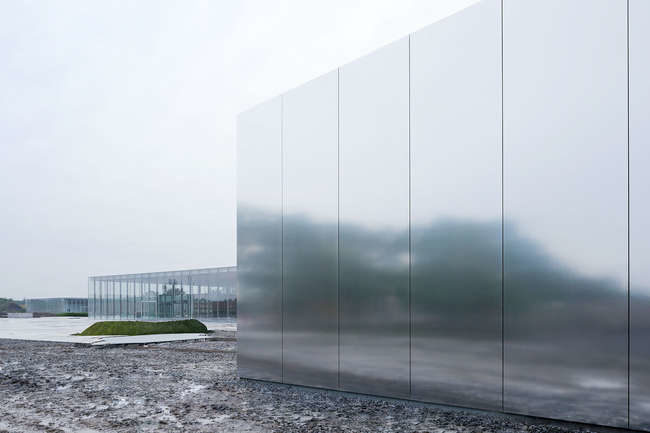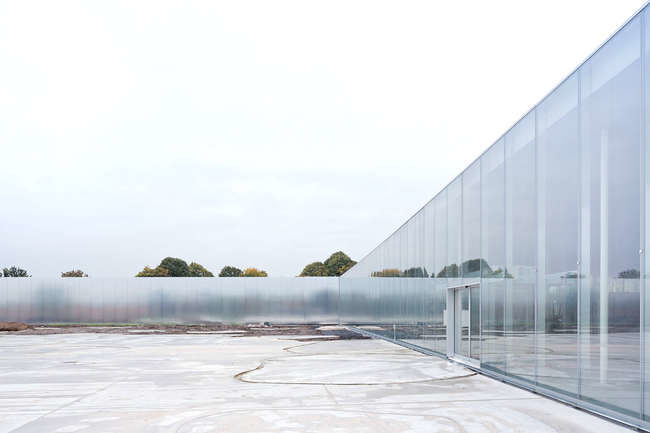Lens, Pas-de-Calais, France
The new branch of the Louvre couldn't be more different from the museum's iconic Paris home. The 300,000-square-foot building, in the city of Lens, France, sprawls across a brownfield site without a single capital or caryatid (or even anything as ornate as I.M. Pei's glass pyramid) thanks to its lead designers, the Tokyo-based Pritzker Prize-winners SANAA. The new building, called the Louvre-Lens, consists of five large boxes, attached corner to corner rather than stacked as at SANAA's New Museum of Contemporary Art in Manhattan. The curtain walls are largely aluminum, in a reflective finish that turns the building, one visitor reported, into a "metallic cloud" (amidst a mounded garden by Paris landscape designer Catherine Mosbach).
The building, which officially opens next week, is the product of several competitions. First, half a dozen French cities competed for the cultural and economic plum—the first the branch of the Louvre outside Paris, meant to ease crowding at the "main" museum and help revive a struggling city. Lens, scarred by both war and coal mines, was selected in 2004. Then came the architectural competition, which resulted in the choice of SANAA and the Manhattan firm Imrey Culbert. (Imrey Culbert, which specializes in exhibition design and has formed teams for other museum competitions, eventually sold its portion of the contract to a French exhibition designer, Adrien Gardère, a result that principal Celia Imrey describes as bittersweet.) But Imrey will be celebrating the opening, along with SANAA principals Kazuyo Sejima and Ryue Nishizawa, whose building bears a strong resemblance to their 21st Century Museum of Contemporary Art in Kanazawa, Japan, and their Glass Pavilion in Toledo, Ohio, both often hailed as masterpieces. Thousands of works from the Louvre's core collection will rotate through the new building, which will also be the site of museological experimentation not easily accommodated by the Louvre itself.










